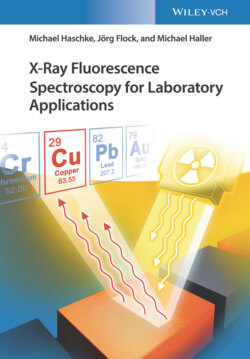Читать книгу X-Ray Fluorescence Spectroscopy for Laboratory Applications - Michael Haschke, Jörg Flock - Страница 48
3.6 Biological Materials
ОглавлениеBiological materials are generally inhomogeneous. For an analysis, it is therefore first necessary to decide whether these inhomogeneities are to be determined by the analysis or whether the mean composition of the sample is of interest and it therefore must be homogenized before the analysis.
If the inhomogeneities of the sample are to be recorded, the use of spatially resolved analyses techniques is required (see Section 4.3.3 for instrumentation, Chapter 13 for the measurement algorithms, and Chapter 16 for examples). The sample preparation for position-sensitive measurements depends on the texture of the primary materials. Solid materials, such as plant parts or bones, can directly be analyzed in certain circumstances; alternatively, the samples are to be cut or ground in order to obtain flat surfaces for the analysis. In the case of tissues, it is possible to convert these into a solid sample by freeze drying, for example, or by preparing microsections for the analysis.
If, on the other hand, the primary material should be homogenized for the analysis, various preparation procedures are available, again depending on the sample state.
For solid materials, such as wood or bone, direct analysis is possible if the samples are sufficiently large and not strongly structured. They can be polished and then directly analyzed.
In the case of inhomogeneous solid samples, it is also possible to prepare pressed pellets. For this purpose, the material must be dried for several hours at 65–85 °C. Higher temperatures should be avoided to reduce the loss of easily volatile elements. After the material is crushed or cut (see Section 3.4.4), it can be pressed without binder, since it has low hardness and therefore produces stable pellets, where applicable also at elevated temperatures.
Soft materials, such as human or animal tissues, should be first dried by heating or by freeze-drying. In this way, the prepared material can then be further processed by cutting or grinding and eventually pressed into pellets. If only a small amount of material is available, it is possible to press the sample into a binder tray (see Figure 3.10).
Another possibility is the ashing of biological materials. For this purpose, the material is heated to temperatures above 900 °C under oxygen supply. Thus, all hydrocarbons escape from the sample, but also highly volatile elements such as P, S, and even important analytes such as As or Hg. The ashes can then be further processed like small-particle material, i.e. as pressed pellet or as a fusion bead.
Another possibility to prepare tissue materials is to freeze them and then produce microsections. These can then be put on a sample carrier and analyzed. Glass slides as well as thin plastic films are suitable as sample carriers. Especially in the case of glass, care must be taken to ensure that the carrier material does not contain any analyte elements.
Finally, biological fluids can be prepared for the analysis like other liquids. Examples of this are described in Section 12.4.3.
From this compilation, it becomes clear that a wide variety of preparation techniques for biological materials are available. Depending on the sample type as well as on the analytical targets, the most favorable option of sample preparation has to be selected. Like always, it is useful to carry out test preparations on comparable reference samples prior to the actual analysis in order to determine sensitivities and recovery rates.
